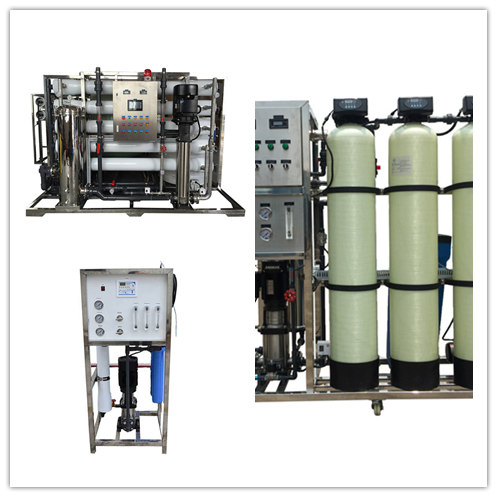INTRODUCTION
It is said that water is life. Therefore the need for clean and fresh water is important. Everybody delights in taking fresh and clean water that won’t cause harm to the person’s health. Therefore ways of ensuring fresh and clean water have been devised and one of the best is the reverse osmosis.

REVERSE OSMOSIS
Reverse osmosis is a process whereby solvents are extracted from a place of high concentration to a place of low concentration through a membrane. This is done by applying external pressure that is more than the osmotic pressure. It is called reverse osmosis because it works reverse of the normal osmosis process which is a natural way of solvents moving from places of low concentration to that of high concentration without any external pressure.
REVERSE OSMOSIS PLANT
This is a manufacturing plant in which reverse osmosis takes place. An average reverse osmosis plant uses 6KW of electric power to remove salt from 1 cubic metres of water.
FEAUTURES OF REVERSE OSMOSIS PLANT
-A valve
This is fixed onto the outside cold water supply. It acts as the source of cold water for the plant. It feeds water to be treated into the plant.
-The filters Filters are in two categories, the pre filters and the post filters. The pre-filters include the sediment filters and carbon filters. They precede the membrane and protect the reverse osmosis membrane from clogging by filtering out dirt. While the post filters, filter water from the storage tank before it goes through the tap. They are there to remove any remaining odors or tastes
The membrane
This is the critical part of the system without which it cannot be an osmosis process. It is where the water treatment takes place.
A check valve
A check valve prevents backward flow of water that has already been treated. This also helps to keep the membrane from clogging.
Shut off valve
This is automatic in nature. It closes automatically when the storage tank is full so as to prevent more water from entering the membrane. This helps in reducing any water wastage.
-Restrictor
A restrictor is in the plant to restrict water flowing into the membrane and also help in maintain the rate at which it is flowing hence maintaining the high pressure required.
-storage tank
A storage tank is the final destination where the treated water is stored as it awaits to be used.
-A Tap and a drainage
A reverse osmosis plant has its own tap and a drainage that is used to drain waste from the whole treatment process.
HOW A REVERSE OSMOSIS PLANT WORK Reverse osmosis system has two stages, whereby the first stage is the pre-filtration process. At this stage particles causing bad taste and odors are removed. The sediment and carbon filters are used in this stage. Chlorine and other suspended particles are removed from the water before it’s pumped into the membrane. The importance of this stage is that it ensures that these particles don’t get into the reverse osmosis membrane and cause any clogging.
After the pre-filtration stage, the next step is the reverse osmosis process. This is whereby water is pumped into the membrane at high pressure and filtration takes place. The high pressure causes water molecules to go through the membrane to the inner tubes. In this stage any particles that have dissolved in water and might even be very small to be seen with the best microscope are filtered. The semipermeable reverse osmosis membrane is designed so to remove a variety of contaminants present in the water and could cause health problems. After this water that is free of salt and other various impurities flows to the storage tank that is pressurized.
Reverse osmosis plant works on a crosswise flow. A percentage of water flowing in the plant is used to wash the plant removing any wastes produced after the whole reverse osmosis process. In other words the reverse osmosis plant cleans itself hence preventing any clogging of the membrane and the filters.
BENEFITS OF REVERSE OSMOSIS PLANT
1.Easy to maintain The fact that the system operates in a way that it washes itself reduces the maintenance costs that could come up due to clogging. All one has to do is keep the plant running and change the filters once in a while.
2.Saves money Reverse osmosis process uses very little energy compared to other filtration systems. It also has the ability to filter water efficiently. This then translates to saving money. The low energy cost also contributes to money saving which is always a good thing.
3.Removes lead and sodium. Lead when taken in great levels causes health issues and sodium is known to cause high blood pressure. Reverse osmosis is able to remove these two minerals that are quite harmful to the human body, something that other water softeners cannot be able to do. So using the reverse osmosis to treat your drinking water helps in maintaining your health.
4.Comes in different sizes A reverse osmosis plant unlike other water treatment plants can be personalized for a persons need. They come in different sizes which with some being smaller and can fit under the kitchen sink at home. They occupy very little space and therefore a person can have one in their very own home. Bottom-line is unlike other water treatment systems that have limitations when it comes to size, the reverse osmosis plants can be purchased for both industrial and home use.
CONCLUSION
Reverse osmosis plants may differ and this could be because; the number of filters a plant has how much water it can filter in a day and the quality of its features or components. Although water may appear to be clear and clean when it flows from the tap, there are always traces of some unwanted contaminants such as lead which is a heavy metal and when consumed could result to kidney problems. The reverse osmosis process extracts all of these unwanted impurities and gives you clean and safe water to drink. The fact that it’s cheap and efficient is more resason to give it a try.

